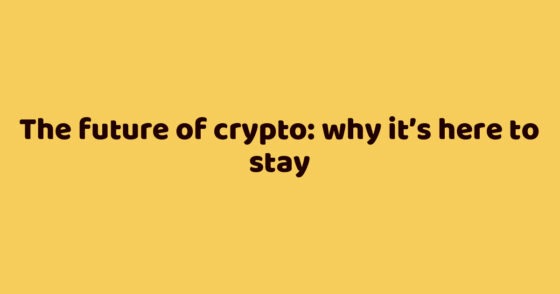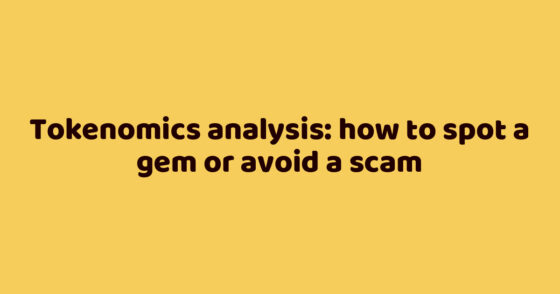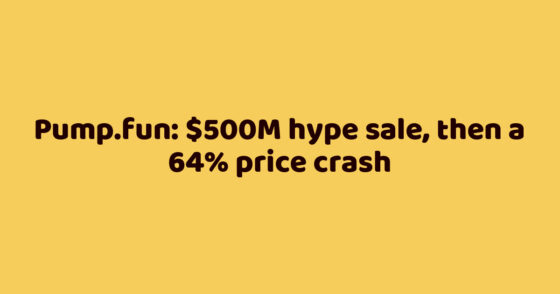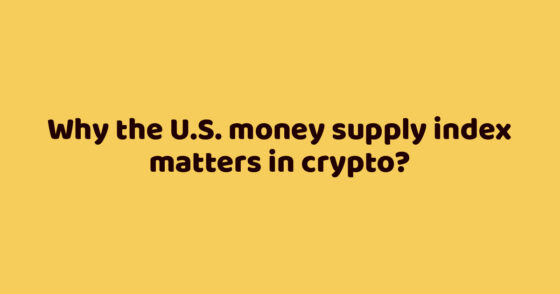After the excitement around TRUMP on January 20, 2025, activity in the Solana network began to decline rapidly, as evidenced by the number of transactions, addresses, and volume of transfers. In addition, according to Santiment, February 19th saw the largest one-month spike in negative sentiment around the project, caused by the scandalous launch of LIBRA. Before that, a similar phenomenon was recorded when TRUMP memecoin prices collapsed.
🧐 Solana sentiment has dipped to its lowest level since the big retrace on January 20th. Traders are expressing frustration over $SOL's 3-month low price of $161. While discussion rates are extremely high and crowd sentiment is bearish, this is historically a signal that there… pic.twitter.com/9QDFhMsZi8
— Santiment (@santimentfeed) February 18, 2025
“Presidential” Meme coins
Solana’s local peak in active users and commission fees occurred on January 19-20, 2025 and coincided with a new price record for the cryptocurrency.


It was during this period that the quotations of the “official memecoin of Donald Trump” reached their maximum values, after which they collapsed from $72 to $34 in just one day.
CryptoRank estimates that nearly half of the wallets that bought TRUMP were created on the day of the transaction, indicating that the memecoin has captured the attention of an audience outside of the market. But just as importantly, Trump has managed to revive the trend of so-called celebrity tokens, as evidenced by Kanye West’s recent announcement of plans to launch his own asset.
Just as the excitement around Trump began to die down, on February 9, 2025, the X-Page of Central African Republic President Faustin-Arange Touadera announced the launch of the CAR memecoin to promote the country’s economic development. The asset did indeed repeat TRUMP’s five-day performance, although it didn’t reach such impressive numbers. According to DEXScreener, the token’s capitalization exceeded $800 million at one point, but it did not stay at that level for more than a few minutes.
To ensure clear and efficient communication, we’ve created a news page (@CarMeme_News) for daily updates and announcements. pic.twitter.com/pJbKGdS7p0
— Faustin-Archange Touadéra (@FA_Touadera) February 9, 2025
The launch itself was accompanied by numerous publications about the fraudulent nature of CAR, the possible hacking of social networks, and the falsification of the video of the president’s speech. It is noteworthy that Touadera himself continued to support the project, even after the price dropped by more than 80%.
However, LIBRA, a memecoin that gained popularity thanks to the support of Argentinean President Javier Miley, became the biggest – both in terms of market performance and market impact. Shortly after its launch, the token’s capitalization exceeded $1 billion. The asset outperformed both CAR and TRUMP in terms of growth rate. However, it also outperformed both CAR and TRUMP in terms of the rate of decline.

The project team was accused of fraud and insider cash withdrawals, while Miley himself faced numerous lawsuits and calls for impeachment from the Argentine opposition.
Thus, in just over a month, three “presidential” memecoins were launched simultaneously, two of which are considered fraudulent by most market participants. And all of them showed very similar dynamics – an initial spike, then a sharp collapse and subsequent trading in a relatively narrow price range well below the historical high. As a result, most traders – except for those who managed to buy in the first seconds or minutes of trading – lose their investment.
However, this is typical for most memecoins and is usually perceived as a peculiarity of “casinos”. What has changed this time?
Tokens for “value extraction”
Memecoins can be seen not only as a cultural phenomenon or a gambling asset, but also as a tool for “value extraction”, allowing capital to be extracted from a particular platform or ecosystem.
The key difference between value extraction tokens and “normal” tokens is not whether insiders participate in their purchases, or even who wins – early holders, retail investors, or bots. The key question is where the winners put their profits.
The “ecosystem” approach envisions traders’ profits being plowed back into the network through reinvestment in new tokens and DeFi protocols that provide passive earning tools. At the same time, the essence of value extraction is the complete withdrawal of a certain amount of capital from the blockchain.
The TRUMP, CAR and LIBRA memecoins became a kind of redistribution hub – during the rally, they concentrated the capital of retail traders, which remained on the balance sheets of those who decided to lock in profits or extract liquidity.
In general, this is typical for all assets, but the problem is that if the main beneficiaries are not interested in further use of the capital in the crypto market, the instrument itself turns into a token to extract value.
For example, during the launch of LIBRA, Miley openly stated that it was an initiative to support small businesses in Argentina, and Touadera allocated $50,000 in CAR tokens to build a school. In reality, this means that capital will have to be withdrawn from the crypto market in order to achieve their stated goals.
Some analysts also point out that the creators of TRUMP have transferred more than $400 million worth of assets to exchanges, and at least some of it has been sold, which could be seen as value extraction.
Trump may have made $802m+ since launching his memecoin
-Team has sent $482M+ of USDC, SOL, and TRUMP to exchanges
-$240M of USDC is held in out-of-range liquidity + $50M in-range
-They have made $29.3M+ in USDC feesDoes not include $16B of TRUMP the team still holds pic.twitter.com/mxujlEmxj0
— Conor (@jconorgrogan) February 3, 2025
And co-founder DeFi Llama (0xngmi) noted that Pump.fun, trading bots and insiders have collectively “leached” about $3.6-6.6 billion from the meme-coin market. And Nansen analysts estimated that LIBRA investors lost about $250 million.
calculated the total extracted from memes on solana:
– trading bots & apps: 1.09bn
– pumpfun: 492m
– MEV: 1.5-2bn
– Trump insiders: 0.5-1bn
– Other insiders: unknown
– AMMs: 0-2bnTotal: 3.6-6.6+ bn
Sources in the next tweet
— 0xngmi (@0xngmi) February 15, 2025
And these are only verifiable transactions – trading commissions, token capitalization reduction, MEV attacks. Losses to ordinary users due to thousands of fraudulent projects, whose creators often withdraw the collected funds for use in “real” life, are not taken into account, although they are likely to result in a more tangible loss of value.
Memecoins of politicians or celebrities are particularly effective at extracting value due to the wide reach and low interest of their creators in the crypto industry. And the fact that all “presidential” tokens were launched on the Solana network creates implications and potential risks for this ecosystem.
It’s not just about money
Another feature of failed or fraudulent projects is the damage they do to the reputation of the market, especially the memecoin segment.
According to Murad Makhmudov, one of the most active ambassadors of this asset class, there are two types of meme tokens:
PvP – short-term “gambling projects” in which some (usually the earliest) investors profit at the expense of others. The vast majority of memecoins are PvP;
PvE – projects with an ecosystem approach that create value through community building and development and, in some cases, third-party products. Examples include Bonk (BONK), Dogecoin (DOGE), or DogWifHat (WIF).
The Memecoin Asset Class is rapidly splitting into two sub-categories: PvP and PvE
My philosophy is to avoid the PvP side entirely.
I believe MUCH BIGGER gains and fulfillment will be found on the PvE side. pic.twitter.com/z7VSFH6Tpz
— Murad 💹🧲 (@MustStopMurad) November 12, 2024
According to this classification, LIBRA and CAR have characteristics of PvP tokens. The situation with TRUMP is more complicated, but it probably falls into this category as well.
The problem with the above assets is that while in classic PvP more or less equal traders compete with each other, in TRUMP, LIBRA and CAR it was mainly insiders and developers who benefited. Most retail players were at a disadvantage due to price manipulation and organized token dumping.
For this reason, Castle Island Ventures partner Nick Carter said after the LIBRA scandal that the time for memecoins is “undoubtedly over”.
In other words, such blatantly dishonest actions, aimed at profiting at the expense of the community, scare away small investors. And while in regular PvP such things have a limited impact and are sometimes perceived as normal, on the scale of “presidential” memecoins they result in millions of dollars in losses and the dissatisfaction of thousands of market participants.
Meme-coins losing momentum?
At the end of 2024, CoinGecko named memecoins the most popular sector of the crypto market – the aggregator’s relevant pages accounted for about 31% of total traffic. The platform’s analysts also believe that this asset class became the second most profitable in 2024, with an average return of 2185%, second only to AI tokens.
However, there are some signs that the momentum will slow in early 2025. According to Dune, memecoins became the least profitable segment of the market in February. Because of this momentum, the narrative’s average annual performance has also deteriorated significantly.


The trend is also confirmed by the price dynamics of the largest memecoin categories on a monthly timeframe – most of them lost 30-60% of their value. By comparison, during the November rally, caused by Donald Trump’s victory in the presidential election, many groups showed three- or even four-digit growth rates.


The largest memecoins in the Solana ecosystem have generally followed this pattern, showing significant price drops in December and an even larger collapse after the launch of TRUMP.


In addition, since February, there has been a decrease in activity on Pump.fun, which is reflected in a decrease in the daily number of tokens created, trading volume and platform revenue. However, this trend is still hard to call sustainable, and the main metrics are still above the levels seen in the fall of 2024.


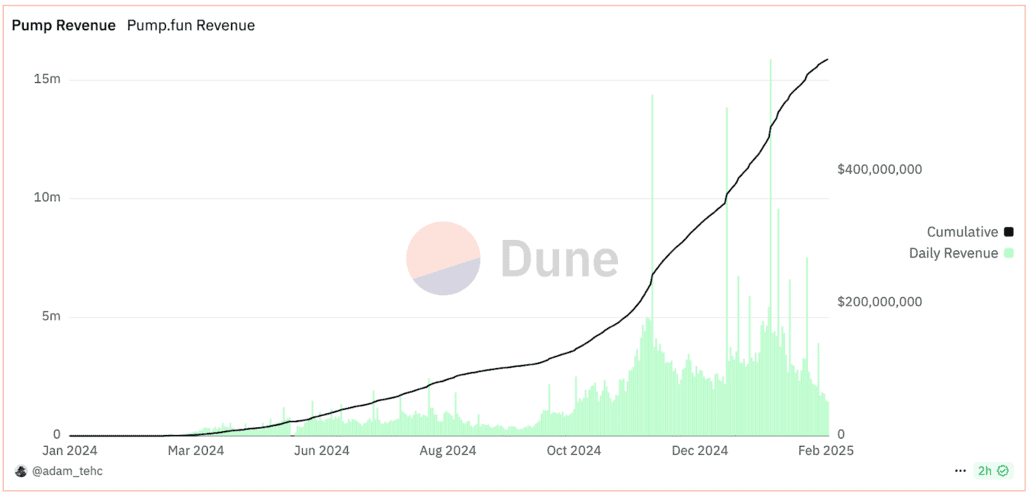
While the decline in prices can be explained by the launch of TRUMP, CAR and LIBRA tokens, which probably absorbed liquidity from many memecoins and some other segments, pump.fun data shows a clear decline in user interest.
The weakening of the segment is also confirmed by market narrative indices over the past six months. Meme coins occupy one of the last positions with an average growth of 12%, although back in November 2024 they were at the top with 67%.

However, meme coins are still far ahead in terms of average trading volume per asset. And, most likely, these indicators are due to active interaction between TRUMP and LIBRA investors.

These figures show that the slowdown in the sector started after the end of the price rally due to the “Trump effect”, but intensified significantly in January and February 2024. The claim that TRUMP, CAR or LIBRA “killed” memecoins is probably an exaggeration. However, their “vampire attack” on the ecosystem’s liquidity and reputational damage served as catalysts for the downward trend in this market segment.
How does this affect Solana?
Since the launch of pump.fun in January 2024, Solana has established itself as the leading memecoin network. Consequently, the decline in the attractiveness of this segment has an impact on the key indicators of the ecosystem.
Thus, after the launch of TRUMP, the number of active addresses began to decrease, the indicator recovered during the start of CAR trading on February 9, but then continued the downward trend. It is worth noting that the LIBRA token had almost no impact on the dynamics.

This effect appears to be due to the fact that Trump was able to attract a large number of users to the Solana ecosystem, 46% of whom created wallets for the first time. The subsequent churn was due to most of these people having little interest in digital assets. However, the downward trend seems to have a systemic effect, as the number has returned to the level of summer 2024. A similar dynamic can be seen in the number of transactions.

However, transaction volume may indicate that the ecosystem began to return to its “normal” state long before the memecoin market crisis. After peaking in November 2024, the metric began a wave-like decline, returning to the metrics that preceded the “memecoin frenzy.” However, the inauguration of TRUMP caused a short-term spike in the volume of transfers.

Regarding the impact on Solana prices, it is difficult to speak of a direct correlation. On the one hand, a decrease in interest in memecoins and user activity can indeed affect demand. On the other hand, a corresponding decrease in commission income leads to an increase in SOL inflation.

However, between January 25 and February 25, the cryptocurrency lost almost 40% of its value, which is difficult to explain by the downward trend in the memecoin market alone. Especially considering that the growth of the supply in circulation has even slowed down since the beginning of 2025.
Additional risks are posed by community dissatisfaction with the actions of the Jupiter and Meteora developers during the launch of LIBRA. These are the largest DEX ecosystems, accounting for the lion’s share of trading volume, and allegations of insider trading could attract the attention of regulators or even trigger law enforcement investigations.
All of these factors, not just the declining interest in memecoins, are affecting SOL’s price performance.
Changing the balance
By the end of 2024, Solana has become the fastest growing and one of the leading ecosystems of the crypto market. Against the backdrop of Ethereum’s technical and organizational problems, many have begun to position Solana as its main competitor, able to provide better infrastructure and attract more developers.
However, as the buzz around Solana’s main growth driver – memecoins – began to subside, the network experienced a decline in user activity.
In particular, TRUMP, which caused a short-term spike in the popularity of digital assets, created the market perception that enabled the launch of CAR and LIBRA. Through his actions, Donald Trump effectively legalized the “memecoin casino” with its price manipulation and insider trading. Moreover, the case of the “presidential” tokens has shown that the image and popularity of famous politicians can attract a new audience, thus increasing the scale of negative consequences for the market and the industry as a whole.
This seems somewhat ironic given that Trump’s choice of Solana as the blockchain for his meme project was perceived by some in the community as a good sign for the ecosystem, indicating support in the US.
Does this mean that Solana has now “lost its narrative”? Probably in the short term, and among the part of the community that sees the network as nothing more than a memecoin casino, yes.
However, it is worth remembering that Solana’s “renaissance” in 2023 did not start with “casinos”, but with quality DeFi projects that managed to attract users through airdrops and good products.
In addition, Solana remains the main network for
- DePIN – the largest projects in this area choose this network because of its high transaction speed and low fees;
- AI agents – most of which are launched using platforms and frameworks integrated with Solana.
In addition, Solana is positioned as a fast and affordable infrastructure for payments. The team has integrated several solutions, such as Blinks and Actions, that are designed for use outside of the crypto industry. According to DeFi Llama, it’s also the third largest ecosystem in terms of stackable coin supply, behind Ethereum and Tron.
An additional driver for long-term growth could be the approval of spot ETFs on SOL, allowing Solana to compete with Ethereum in the traditional US market.
Bitwise analysts expect the cryptocurrency’s value to reach $462-$551 in 2025 if it can increase its current market share of 2.8% by 1.5-2 times by attracting new users and popularizing blockchain solutions.
Solana is likely to feel the decline in interest in memecoins more than other ecosystems. The price pressure caused by FTX unlocks will also cause problems, but the project has already experienced “bad times” after the bankruptcy of its largest investor and managed to recover from $8 to $100 in just one year.
It all depends on whether the ecosystem can continue to attract popular market narratives and turn them into growth drivers.

